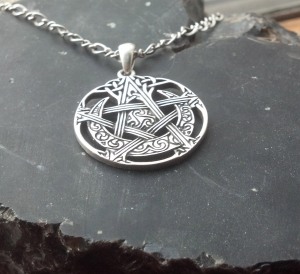It’s hard to answer this question without answering the other 29 questions as well. It’s hard for me to just give a “basic” introduction of Lugh. It’s like that book, If You Give a Mouse a Cookie.
If you ask me to talk about Lugh, I’m also going to want to talk about how I met Lugh.
If I talk about how I met Lugh, I’m going to also want to talk about about His names and epithets.
If I talk about His names and epithets, I’m also going to want to talk about His myths . . .
It’s a vicious cycle, so I’m trying to halt it by looking at the list of other questions as I write this, hoping that nothing I say winds up being an answer to another question on a different day. I’m finding it impossible not to mention the other subjects – but I will try not to go into too much detail.
So, let’s talk briefly about Lugh.
Lugh is an Irish deity, and according to Caesar’s account – was one of the most widely honored deities of the Irish pantheon. Caesar equated him with Mercury, but while there are certainly similarities between the two gods, Lugh is very much a unique deity.
He was a member of the Tuatha dé Danann, usually translated as the Tribe of the Goddess Danu. He was a relative newcomer to the Tuatha dé, but proved Himself more than capable in battle. He is the divine father of the Irish hero Cú Chulainn, and served as a king of Tara. This project has some excellent timing because Lugh actually founded the festival of Lughnasa, which bears his name. The most popular belief is that He founded it in memory of his foster mother Tailtu.
It’s very hard to pigeonhole Irish deities by calling them “The god of ____,” which was a hard concept for some historians and anthropologists to grasp. We see in some other cultures that deities have very strict domains. The God of the Sea,” “the God of the Sun,” and so on and so forth. This is not how the gods of Ireland are arranged.
The Irish, and in many instances the Celtic, worldview saw deities as very much real and present in their lives. They weren’t distant figures in the sky – they walked among man. They fought with them, or beside them, they had children, they lived, and they died. How could a god only deal with the sun when He also has a war going on in his back yard? How might a goddess take care only of the hearth when there’s smithing to be done?
This difference in worldview is where many misconceptions about Lugh, and other Celtic deities, come from. Even though we know today “that’s not how that works,” misinformation continues to be spread. I’ll elaborate more on Day 9: “Common Mistakes About this Deity,” but I felt it necessary to bring up in this introductory post because it’s necessary to grasp this concept before we can continue.
Because you can’t introduce Lugh simply or briefly and consider it a complete description.
You can’t say, “This is Lugh, the Irish God of War” because He wasn’t. Neither was He The Irish God of Smithing, nor The Irish God of Bread Making. That’s not how the worldview works.
You can say He is an Irish God. You can say He has some warrior characteristics. You can say He has some skill as a smith. As soon as you get rid of that definite article “the,” you start hitting a little closer to the truth.
Lugh is a god of many things, and I hope you will enjoy getting to know Him through this project, as I have enjoyed getting to know him through my months of devotion to Him.




